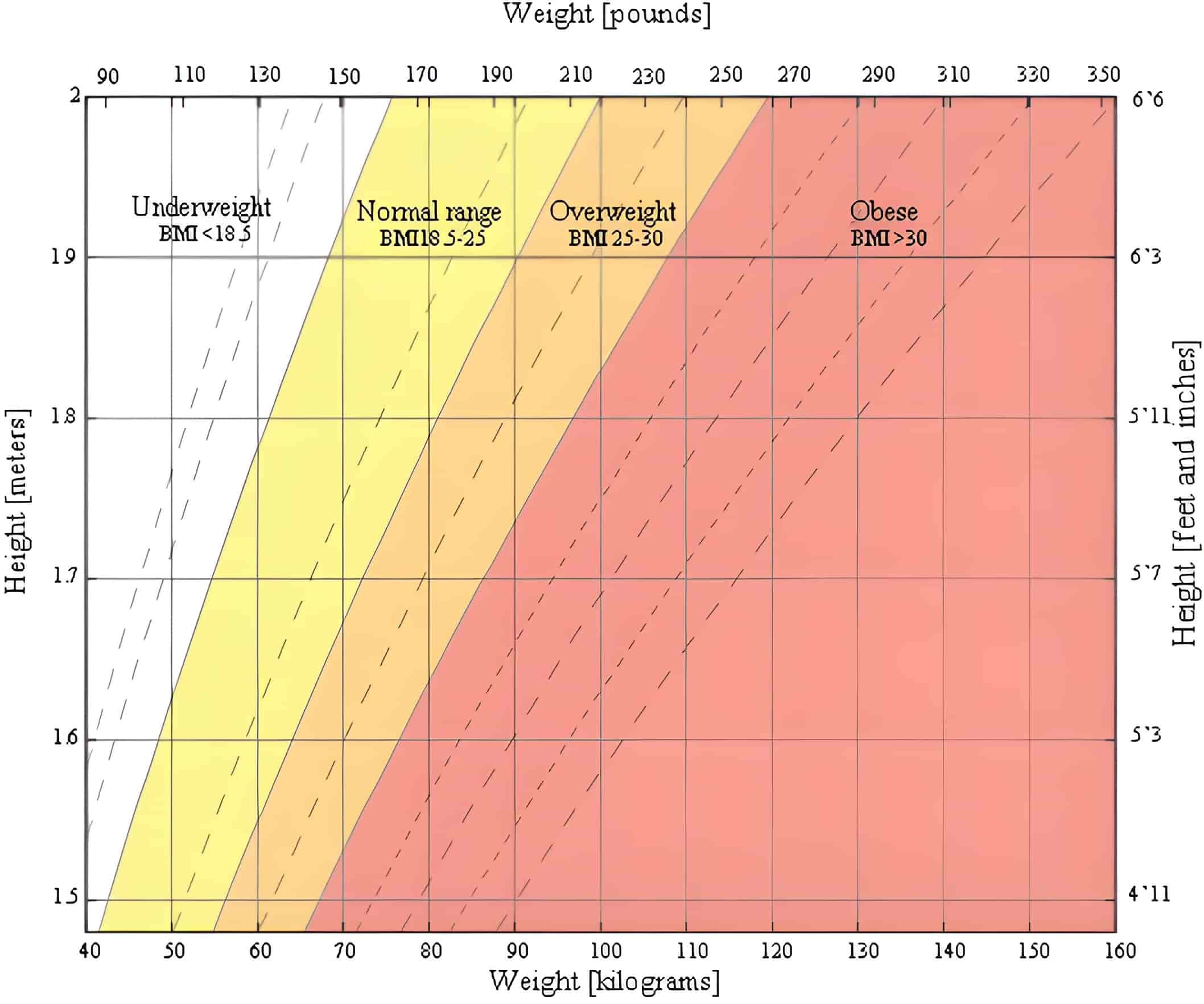The body mass index (BMI), which is a measure of body fat, is calculated based on weight and height. It applies to both men and women. To calculate your BMI, you can either consult the tables below or use the tool provided.
Use metric or standard measures to enter your height and weight.
Click “Compute” to see your BMI.
This calculator calculates the body mass index (BMI), and the BMI weight status for adults aged 20 and over.
Calculate Your Body Mass Index
What is BMI?
BMI is a number that is calculated from the person’s height and weight. The BMI is a reliable indicator of body fatness and can be used to screen for potential health problems.
Adults aged 20 and over are able to interpret BMI using standard weight status categories. These categories apply to men and women of any age and body type.
High body fatness can be indicated by a high BMI. The BMI screen for weight categories that could lead to health issues, but does not determine the body fatness and health of an individual.
BMI = kg/m2 where kg is the person’s body mass in kilograms and m2 is their height in meters. A BMI greater than 25.0 is considered overweight. The healthy range is 18.5- 24.9. The BMI is applicable to all adults aged 18-65.
Your BMI should not be below 18.5. Your 18.5-24.9 BMI falls within the healthy weight or normal range. Your BMI should be between 25.0 and 29.9 to fall within the overweight category. If your BMI is more than 30.0, you are considered obese.
The BMI is an indicator of body weight but is not the same thing as having your actual body fat percentage measured. BMI does not take into account frame size, body composition, or gender.
High BMI may be due to increased muscle mass, rather than higher body fatness in athletes. A person with a high BMI would generally be obese or overweight. However, this does not necessarily apply to athletes.
To assess an individual’s risk factors and health, a trained healthcare provider should conduct appropriate health assessments.
Although the correlation between BMI and body fatness can be quite strong, even though two people may have the same BMI, the level of body fatness could differ.
In general:
- Women tend to have higher body fat at the same BMI as men.
- The BMI can be adjusted to adjust the amount of body fat.
- On average, older adults have more body fat at the same BMI as younger adults.
- Athletes have less body fat at the same BMI as non-athletes.
BMI is a better indicator of body fat than BMI. However, people with higher body fat and BMI are more accurate. A person with a high BMI (e.g. 35 kg/m2) will be more likely to have high body fat.
However, a relatively high BMI could also indicate high body fat. To assess an individual’s risk factors and health, a trained healthcare provider should conduct appropriate health assessments.
| BMI range | Classification |
|---|---|
| less than 16.5 | severe underweight |
| less than 18.5 | underweight |
| 18.5–24.9 | normal weight |
| 25.0–29.9 | overweight |
| 30.0–34.9 | obesity class I |
| 35.0–39.9 | obesity class II |
| 40 or greater | obesity class III |
BMI chart for adults
BMI chart for children and teens, age 2-20
BMI Chart For Boys With Age from 2 to 20 years

BMI Chart For Girls With Age from 2 to 20 years


